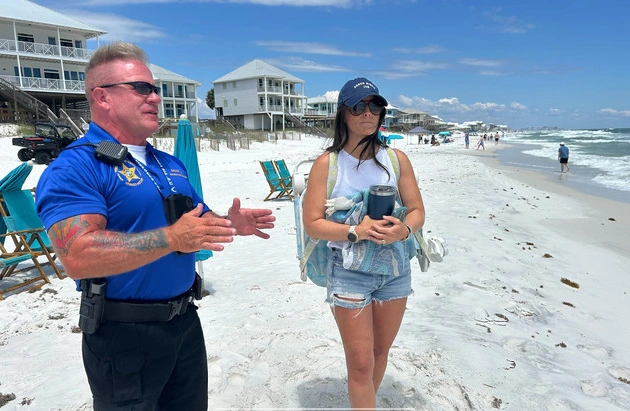
Understanding Florida’s Complex Beach Access Laws
Florida’s beaches have always been a point of contention, especially when it comes to public access. The battle over where a visitor can stand has escalated over the years, leading to legal disputes and confusion among tourists and locals.
One of the key issues revolves around the definition of public land on beaches. According to the Florida Constitution, beaches below the mean high water line are considered public land. However, determining where exactly this line lies can be a challenge.
In an attempt to clarify beach access rights, the Florida Supreme Court introduced the “customary use” doctrine in 1974. This doctrine aims to provide access to dry sandy beaches based on historical recreational use.
The Ongoing Struggle for Clarity
Despite the legal framework in place, conflicts persist between property owners and beach access advocates. In Walton County, for example, disputes over public access have led to costly legal battles and community tension.
In response to the complexities surrounding beach access, the Florida Legislature passed laws in 2018 to address the issue. However, the effectiveness of these laws has been questioned, with critics arguing that they favor property owners over the general public.
Implications for Tourists and Locals
For visitors to Florida’s beaches, understanding the intricacies of beach access laws is crucial to avoid unwittingly trespassing on private property. Signs indicating private beachfronts can be misleading, leading to confrontations between beachgoers and property owners.
Locals, too, are impacted by the uncertainty surrounding beach access rights. The prospect of losing traditional public beach areas can be disheartening for long-time residents who cherish their coastal heritage.
The Road Ahead
As Florida grapples with the complexities of beach access laws, the future remains uncertain. While repealing certain legislation may bring back a sense of normalcy, the underlying tensions between property rights and public access are unlikely to disappear.
By staying informed and advocating for transparent and fair beach access regulations, both tourists and locals can contribute to a more harmonious beach experience for all.











